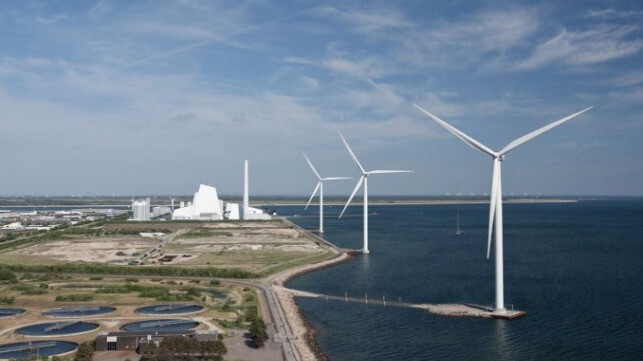DNV: Offshore Wind Set to Grow 56-Fold by 2050

DNV expects that offshore wind will play a substantial part in the energy transition, increasing its market share to nearly 10 percent of global electrical power generation through 2050.
Thanks to the relative ease of scaling up, offshore wind will likely enjoy an annualized growth rate of about 13 percent over the coming decades, the class society predicted in its annual Energy Transition Outlook. This corresponds to a cumulative 56-fold capacity increase over the same period.
The key regions for offshore wind market growth will be in Europe - the historical home of the offshore wind industry - and in the OECD Pacific. In these regions, offshore wind is set to outstrip onshore wind capacity over the next three decades. Cost savings and improving technology will help drive uptake as bigger and better turbines come onto the market.
Beyond electrical power generation, DNV sees an important role for wind in the production of green hydrogen. Even without laying a power cable connection to shore, purpose-built off-grid wind farms will be able to generate hydrogen on-site and pipe it back to a receiving station. DNV expects that about 240 GW of offshore wind generating capacity will be dedicated to hydrogen production worldwide by midcentury, along with another 500 GW of onshore wind capacity.
The transition will have the opposite effect on oil and gas production. Global oil demand could peak as early as 2025 as energy consumers begin to switch their supplies, and a gradual decline through 2050 will make it "less attractive for the industry to expand production into challenging environments, such as deep water, high pressure, and/or remote locations such as the Arctic."
Demand for natural gas is expected to keep rising through 2036, then decline slowly to 2050. One market where there will be less than expected: Europe, which is now expected to use about half as much gas in 2050 as DNV predicted a year ago. This is purely a function of the Russian invasion of Ukraine and the collapse of Russia's gas supplies to Europe. "Energy security is forcing Europe to double down on increasing the efficiency in the system and increasing the production of renewables," DNV's Sverre Alvik told Reuters.
But in the near term, attention is firmly centered on getting enough fuel - particularly in Northern Europe, which faces a difficult winter without Russian gas. As an indication of the change in emphasis, methane emission goals are taking a backseat as the markets scramble for supplies. "To put it bluntly, countries need oil and natural gas now, and do not care how they get it. In fact, preliminary numbers suggest that [methane] emissions from oil and gas extraction have increased in 2022 compared with 2021," DNV reports.
